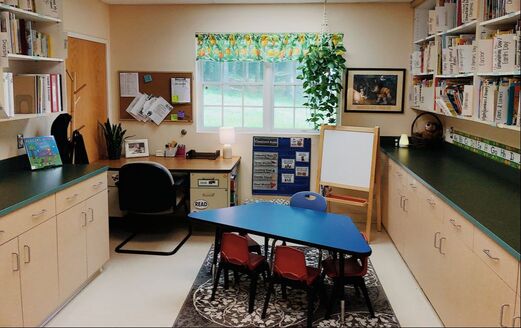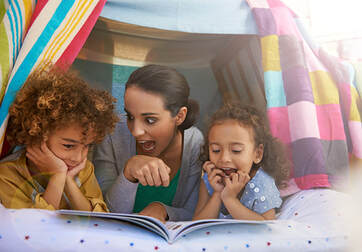Welcome to Forest Hill Nature Preschool’s Reading Program!
“To learn to read is to light a fire; every syllable that is spelled is a spark.” – Victor Hugo
|
My name is Carrie Bojarski. I have worked at FHNP for ten years since the school opened as a classroom teacher in the twos and the fours and I am so excited to be finishing my first year as the reading teacher! Prior to working here, I received my bachelor’s degree in early childhood education from Towson University. As the reading teacher, it is my goal to lay the foundation for beginning reading and develop confidence and excitement about literature in a positive, encouraging environment.
The reading program is specifically for the students in the four-year-old classrooms that will be going into Kindergarten the following year. The goal is to introduce basic literacy skills to them in order to help prepare them for their continued learning and future reading. Students meet in small groups every week in the reading room/library that is located behind the school office. During this time, they will participate in games, activities, story time, and more! |
Literacy Goals and Objectives
Below are some of our goals and objectives that we work on. These standards have been taken from multiple sources including Pre-Kindergarten Maryland College and Career Readiness and Reading Rockets.
|
Print Concepts
Key Ideas and Details
|
Phonics and Word Recognition
Phonological Awareness
Writing
|
How Can You Help Your Child Learn to Read?
“Children are made readers on the laps of their parents” – Emilie Buchwald
|
1. Books galore – Keep books in sight as much as possible. Create a library at home, even if it is just a book basket with a few books. Then read and reread!
2. The alphabet – ABC’s open the doors of learning to read through phonics. Teaching letter names and sounds is simple and fun. You can use play dough to build and stamp letters, help find letters in their environment, do uppercase/lowercase matching, provide magnet letter play, and much more |
3. Read and think aloud – Read to your child or have your child read to you. Comprehension doesn’t need to be complicated. Talking about what is being read makes thinking about what is being read a habit
4. Reading and writing – Reading and writing go hand in hand! Better readers become better writers. Better writers become better readers. You can start with pictures by drawing, labeling, writing or telling a story, or drawing a picture about a book you’ve read. Source: A Teachable Teacher |
Reading for 10 minutes per day = 3,650 minutes per year!
Got Books?
We are always taking donations for books to add to our school library! If you have any unwanted books that are age-appropriate and in good condition, you may drop them off in the school office. Thank you!




